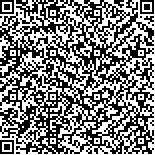| 摘要: |
| [目的]雷达植被指数(Radar Vegetation Index,RVI)作为评价雷达影像植被分布与生长状态的重要指标,对植被生长动态监测具有重要意义。然而,不同算法的雷达植被指数对于同一地物类型的表征往往存在一定的差异。文章通过对比分析3种常用RVI在多种类型地物上的差异,为其在SAR影像特征提取、分类、识别等应用提供指导性意见。[方法]实验基于武汉市Radarsat 2全极化数据,结合Google earth 历史影像和实地调研数据,选取林地、灌丛、草地、耕地、水生植被、建筑、道路、裸地、湖泊、河流10种典型地物样本,从样本折线图分布、类内标准差等方面,对分别通过H/A/alpha分解、Freeman分解和后向散射系数计算得到的3种常用雷达植被指数Van_RVI、Freeman_RVI和Kim_RVI进行了测算分析。[结果]3种雷达植被指数有着相似的折线图走势,对植被的监测能力良好,但对于不同地物的敏感性稍有差异:Freeman_RVI对林地等高密度植被区域敏感程度较高; Van_RVI对耕地与林地、灌木与林地具有一定的区分性; Kim_RVI对水体与建筑的敏感程度较高。[结论]Freeman_RVI对高密度植被识别能力最好,可用于林地提取、森林制图; Van_RVI对植被与非植被的区分能力最好,适用于植被提取; Kim_RVI数据预处理计算速度最快,但提取精度不高,可用于应急制图。 |
| 关键词: Radarsat 2全极化数据雷达植被指数对比分析Freeman Durden分解特征值后向散射系数 |
| DOI: |
| 分类号: |
| 基金项目:国家重点研发计划项目“区域协同遥感监测与应急服务技术体系”(2016YFB0502600); 湖北省自然科学基金“基于遥感和生长模型数据同化的湖北省农作物长势监测研究”(2012FFB00305) |
|
| DIFFERENCE ANALYSIS OF MULTIPLY RADAR VEGETATION INDICES BASE ON RADARSAT 2 FULL POLARIZATION DATA |
|
Mei Xin1, Nie Wen1, Liu Junyi2
|
|
1.Faculty of Resources and Environmental Science, Hubei University, Wuhan, Hubei 430062, China;2.State Key Laboratory for Information Engineering in Surveying, Mapping and Remote Sensing, Wuhan University, Wuhan, Hubei 430079, China
|
| Abstract: |
| Radar vegetation index (RVI) is one of the most widely used measurements to monitor and evaluate the vegetation distribution and vegetation growth status of Synthetic Aperture Radar (SAR) images. It is of great significance to the dynamic monitoring of vegetation growth. However, the RVIs calculated from different algorithms have some differences in the evaluation of the same land cover type. This research mainly analyzes the differences of three commonly used RVIs on the performance of various types of land cover, and provides guidance for its application in SAR image feature extraction, image classification and recognition. The experimental data were collected from Wuhan city, including Radarsat 2 full polarization data, Google earth historical image and ground truth, and the ten typical samples of forest land, shrub, grassland, cultivated land, aquatic vegetation, buildings, roads, bare land, lakes and rivers were selected. The Van_RVI derived from H/A/alpha polarimetric decomposition, Freeman_RVI derived from Freeman Durden decomposition and Kim_RVI calculated from the backscattering coefficients were compared and analyzed from histogram distribution and the standard deviation. The result shows that three kinds of RVI have similar histogram trend, and have the capacity to monitor vegetation effectively. However, their sensitivities to different land covers are slight difference. Freeman_RVI has good sensitivity to high density vegetation such as forestland; Van_RVI can distinguish cultivated land from forestland, or shrubs from forest land. Kim_RVI is very sensitive to water and buildings. In conclusion, Freeman_RVI can be used for forest extraction and forest mapping for its best ability to recognize high density vegetation. Van_RVI can be used for vegetation extraction, due to the ability to distinguish between vegetation and non vegetation features. Kim_RVI cannot effectively distinguish different land cover types, but it can be used to calculate for vegetation index emergency mapping because of its simple preprocessing flow. |
| Key words: Radarsat 2 full polarimetric data radar vegetation index difference analysis Freeman Durden decomposition eigenvalue backscattering coefficients |

